
Where Can Young Americans Afford Their First Home? | 2025 Study
Nearly 75% of Americans under 30 cannot afford to buy a home in their current city, making location choice critical
Choosing a new bathtub can be quite a daunting task, with so many different options in varying materials, shapes and sizes. This guide is designed to help you understand the more popular options on the market and help you decide if a Cast Iron bathtub is right for your home.
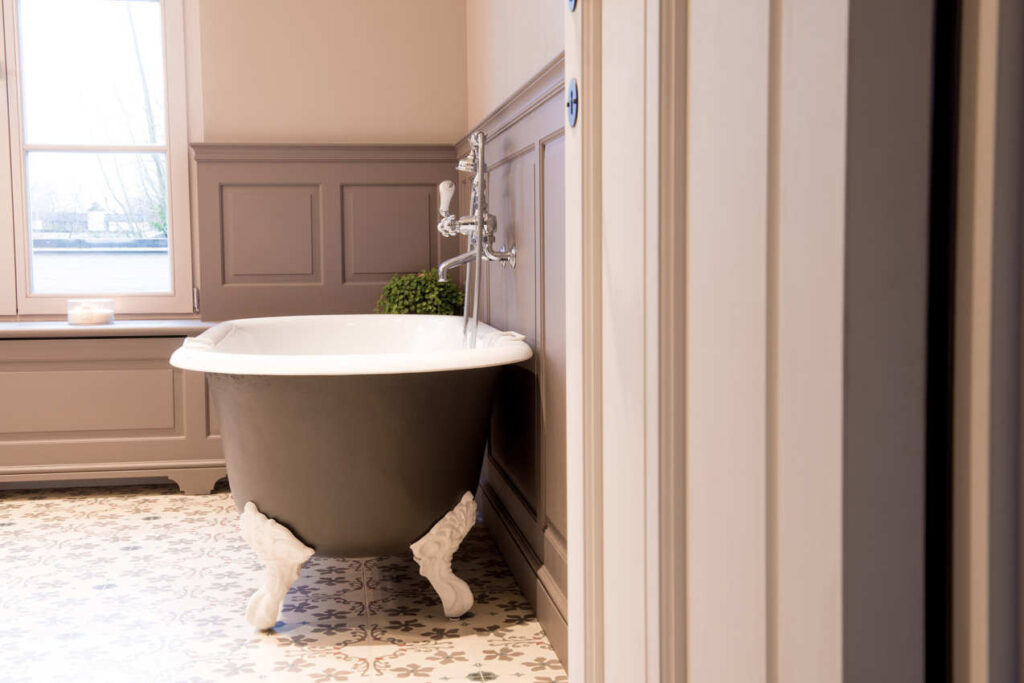
A cast iron bathtub is a bathtub which is made with porcelain fused with iron, which is then coated with enamel to prevent chipping. The result is a bathtub that is highly durable and resistant to chipping due to the enamel coating. The iron characteristics also make it resistant to scratches and heavy impacts. And since cast iron naturally absorbs heat, this bathtub will hold water temperatures for much longer, creating a more lasting bathing experience.
Without a doubt, cast iron is one of the most popular material options for homeowners. There are many reasons why even architects advise to consider getting a cast iron bathtubs, and these are just some of them:
That said, keep in mind that cast iron bathtubs are not perfect. They are extremely heavy, so they might require additional support. Another thing is to check whether the price of a cast iron bathtub suits your budget as they are quite expensive.
For many of its character positives, cast iron bathtubs do come with one drawback-their heavy weight. Cast iron bathtubs rank among the heaviest of bathtub materials, due to the qualities of cast iron itself. The additional weight means that not every bathroom can support this material, not unless additional considerations are placed on supporting the bathtub at full capacity. Whether you have a small or large cast iron bathtub, the weight will float anywhere between 200-300 pounds, unfilled. So do your research and reinforce your floor as needed.
The most common sizes for cast iron bathtubs would be 66 inches and 72 inches. Of course, if you want something smaller, they can go down to 60 inches if you have a smaller space. The reason for the popularity of these sizes is due to their incredible versatility. Both of these sizes can be either freestanding or drop-in style, meaning more flexibility in terms of installation and available space, making them ideal bathtubs for small spaces. The length also helps in keeping a person submerged so that their knees aren’t sticking out during a long bath. Freestanding bathtubs offer a versatile and stylish option that can be placed anywhere in the bathroom, adding a touch of elegance to the space.
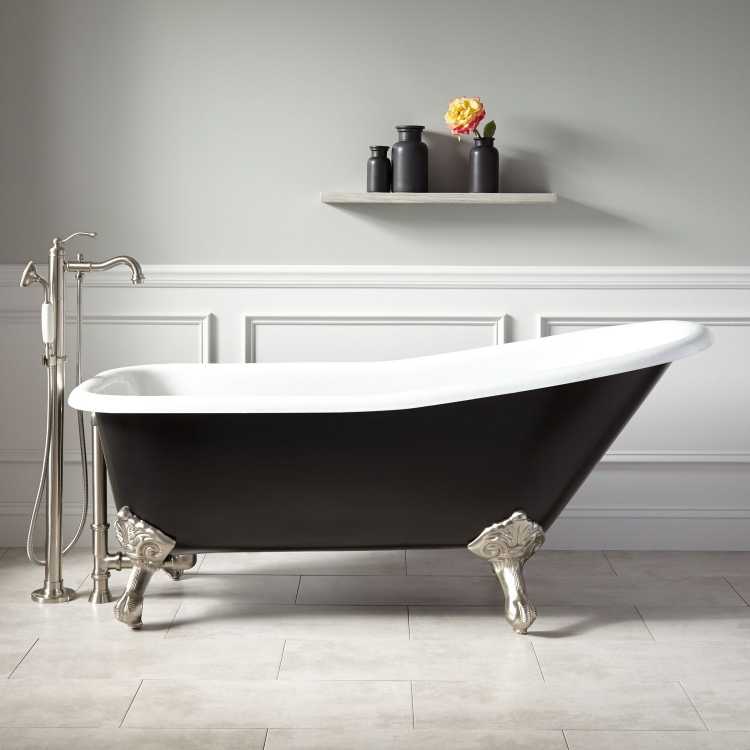
Cast iron bathtubs generally fluctuate between $500-2,000 typically, although there are many outliers on either end. You can obtain one for roughly $300-400, though these would be much smaller in size and the higher end models will come with more features that ensure ease of install and some minor safety features like steps and hand-holds. This, of course, is not factoring in installation costs, which, for your safety, it is highly recommended you have additional help when installing this bathtub type. Due to the many positives of the material, it is quite normal to see the bathtub cost on the higher price spectrum.

Acrylic bathtubs are formed by taking a solid sheet of petrochemicals, stabilizers, resin and appropriate dye, then heating it into the mold to form a bathtub. This is lastly reinforced with sheets of fiberglass, making for a lighter bathtub with a wider flexibility of shapes and sizes.
| Acrylic Bathtub | Cast Iron Bathtub | |
| Lightweight | Lighter (75 lb) | Heavier (300 lb) |
| Flexible in design | Wide range | Limited choice |
| Heat retention | Middle | High |
| Durability | Good | Excellent |
Acrylic bathtubs are considerably lighter than cast iron,making it much easier to install and manipulate. Plus, your floor does not need a great deal of reinforcement to support an acrylic bathtub.
Since it is an easy material to work with, acrylic bathtubs come in a wide variety of styles and shapes for any bathroom, much more than cast iron bathtubs.
When compared to a cast iron bathtub, an acrylic bathtub has nowhere close to the heat retention that a cast iron bathtub maintains. Heat retention is important for keeping your water warmer for longer periods of time., styles and shapes
Compared to a cast iron bathtub, an acrylic bathtub cannot weather heavy impacts and will chip much easier. These types of bathtubs will also deteriorate overtime and have much less longevity when compared to cast iron bathtubs.
When compared to Cast Iron bathtubs, they have a small list of pros and cons between them as their price points are actually quite similar on the low end. However, in the long run, the cast iron bathtub is superior in nearly every way, with the only drawback being its immense weight.
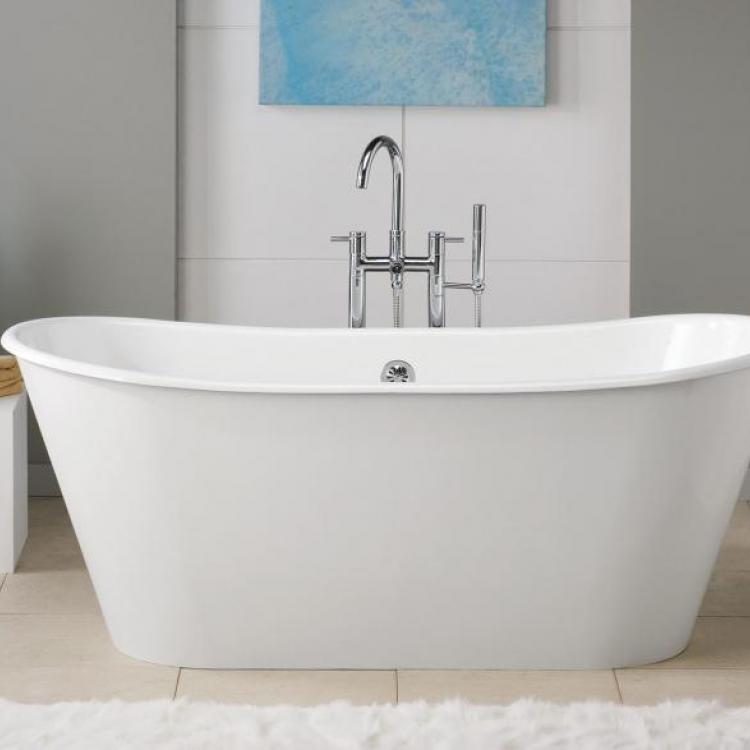
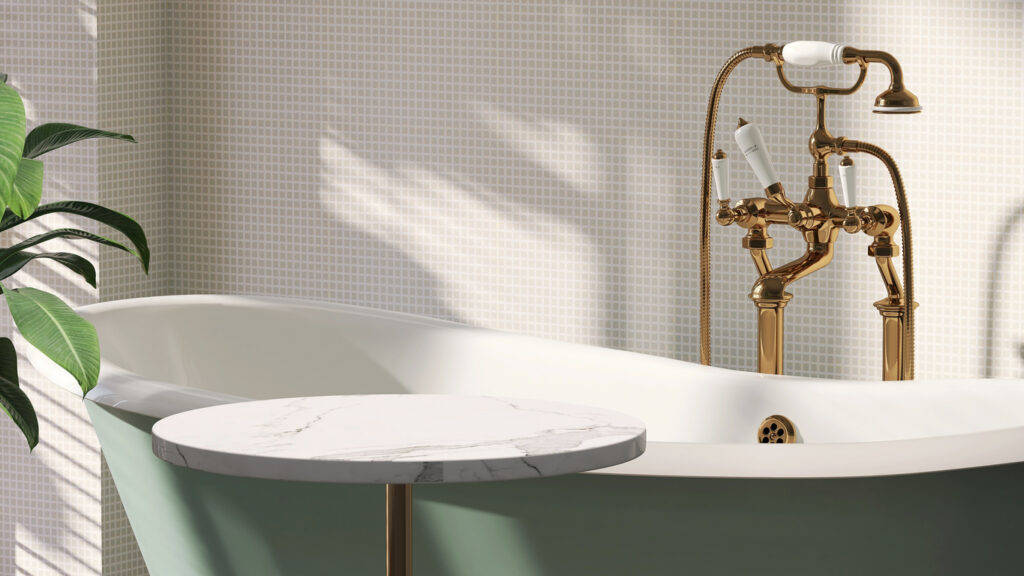
Keeping your bathtub in top shape is important for the longevity of your tub and helps to improve the sanity of the water you bathe in. Since cast iron bathtubs are a mixture of porcelain and cast iron, it is important to reapply the enamel finish to keep the surface of your bathtub protected.
Using a degreaser, clean the bathtub, making sure you remove any caulk residuals
Using a putty knife, apply filler to any open chips or cracks that may appear on your bathtub
When the chips are filled, use a sander or utility knife to even the surface and make it smooth
Before applying the paint, make sure to cover the area with some sort of tarp or protective cover so that you do not apply the paint to undesired areas.
Using either an air compressor or paintbrush, apply paint, waiting every 15 minutes before applying another coat.
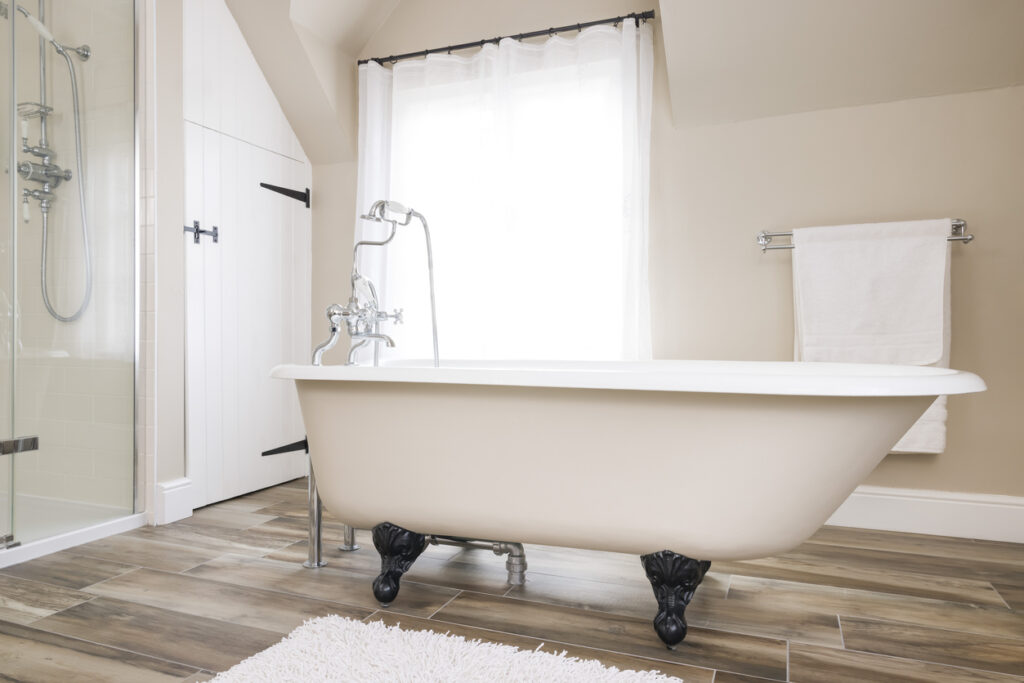
A popular alternative to replacing your bathtub is simply repainting or reglazing it. With a new bathtub, your price will vary between $250-1,000 not including installation costs. Reglazing will run similarly between $300-1,000, depending on the size of the area that needs painting. The difference is that you don’t need to demolish or remove an existing bathtub and deal with the hassle of the installation process. Either hire a professional to reglaze the space for you or DIY. For DIY purposes, understand that painting your bathtub will produce toxic fumes, so wear proper equipment while doing so for the safety of yourself and others. The process of re-glazing also helps to restore any residual weathering that your bathtub may sustain from use over time.
Since a partial component of this bathtub is iron, it is prone to rust stains due to regular use. An easy fix for that is iron stain removers or abrasive cleaning products. Take care however as these products can invariably scratch your bathtub if you aren’t careful. Avoid using wool or any brushes that can also scratch your bathtub. It is advised to use a pumice stone, which is a small porous rock. Use a combination of the pumice stone and warm water to remove the rust stains with a light rub, so as to not damage your bathtub, then when the stain is gone, apply lemon and salt.
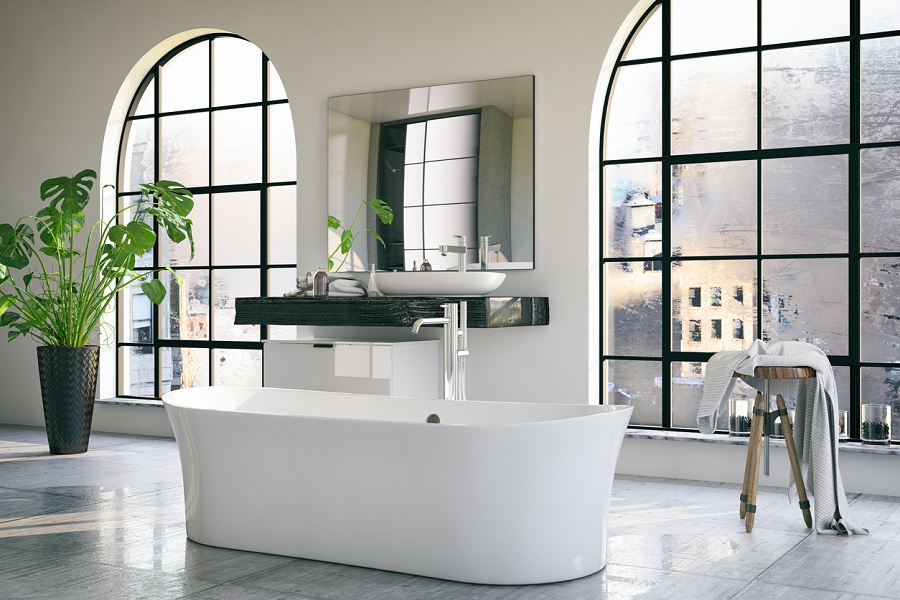
For installation purposes, you want at least two people, recommended four for this job as it is incredibly difficult to maneuver and place compared to other bathtubs.
You can rent rigging equipment or use your own system of leveraging boards for support, but understand that this bathtub will be incredibly heavy, so the more strain you can place on doilies or ropes, it is advised you do so.
Make sure your floor is reinforced to support the additional weight as you install this otherwise your bathtub can easily fall through.
Removing it on the other hand is slightly easier, as you want to cover the bathtub with a towel or tarp before hitting it with a sledgehammer, creating more manageable pieces for you to remove. You can of course attempt to move it using the same method for which you installed it, but understand that this may create more hassle and risk of injury than it is worth.
Cast iron bathtubs have some of the best positives over many bathtubs on the market. Their only drawback is their immense weight which makes it not an ideal choice for many homes as the weight can be staggering for a bathroom to support. So make sure your home can support one before purchasing.
If you need expert’s advice on which cast iron bathtub to choose, reach out to us here in Badeloft and we’ll help you make the right decision.

Eric is the founder and president of Badeloft USA. He has been the president of Badeloft’s US division for over ten years and oversees all marketing and branding aspects of Badeloftusa.com.
His expertise lies in small business development, sales, and home and bathroom industry trends and information.
Contact us with any business related inquiries.
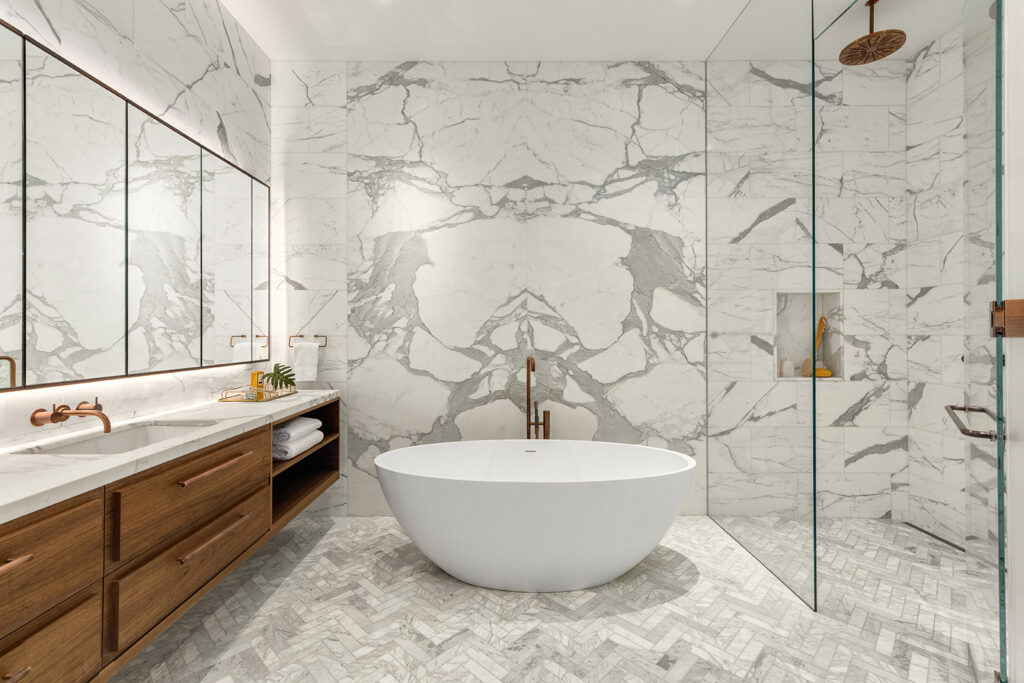
Free material samples and tub templates

Nearly 75% of Americans under 30 cannot afford to buy a home in their current city, making location choice critical

1 out of 5 Americans says they always feel rushed in their daily lives, yet finding cities that support a

When upgrading your bathroom, one of the most important—and often overlooked—decisions is choosing between a one-piece or two-piece toilet. While

Small details, including what you place on the floor, can make a big difference when setting up or upgrading your
Request your free material sample below. By submitting, you agree to receive occasional product updates and offers from Badeloft. Unsubscribe anytime.
"*" indicates required fields
"*" indicates required fields
"*" indicates required fields
Excellent article. Cast iron bathtub refinishing is a great alternative when the time to remodel a bathroom arrives.
what does H inside diamond on tub mean